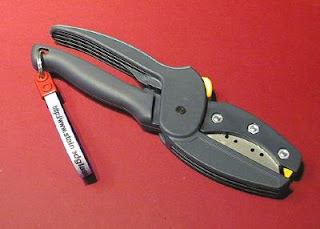Initial Rate of Advance
Tack fuses look easier than full fusing, but they are really
one of the most difficult types of kiln forming. Tack fusing requires much more
care than full fusing.
On heat up, the pieces on top shade the heat from the base glass leading to
uneven heating. So you need a slower heat up. You can get some assistance in
determining this by looking at what the annealing cool rate for the piece is. A
very conservative approach is needed when you have a number of pieces stacked
over the base layer. One way of thinking about this is to set your
initial rate of advance at approximately twice the anneal cool rate.
Annealing
The tacked glass us loosely attached rather than fully formed together. So, the glass pieces are still able, partially, to act as separate entities, meaning excellent annealing is required.
Effects of thicknesses, shapes, degree of tack
- Tack fusing of a single additional layer on a six millimetre base
- Rectangular pieces to be tack fused
- Sharp, pointed pieces to be tack fused
- Multiple layers to be tack fused
- Degree of tack – the closer to lamination, the more time required
Glass contracts when it's cooling, and so tends to pull into
itself. In a flat, symmetrical fuse this isn't much of a problem. In tack fuses
where the glass components are still distinct from their neighbours, they will
try to shrink into themselves and away from each other. If there is not enough time for the glass to
settle into balance, a lot of stress will be locked into the piece that either
cause it to crack on cool down or to be remarkably fragile after firing. In tack fusing there also are very uneven
thicknesses, making it is hard to maintain equal temperatures across the glass.
The tack fused pieces shield the heat
from the base, leading to localised hot spots during the cool down.
On difficult tack fuses it's not unusual to anneal for a
thickness of two to three times greater than the thickest part of the glass. That extended cool helps ensure that the glass
has time to shift and relax as it's becoming stiffer, and keeps the temperature
more even throughout.
In general, tack fused pieces should be annealed as though
they are thicker pieces. Recommendations range from the rate for glass that is
one thickness greater to at least twice the maximum thickness of the whole
item. Where there are right angles -
squares, rectangles - or more acutely angled shapes, even more time in the
annealing cool is required.
It must be remembered, especially in tack fusing, that
annealing is much more than the annealing soak. The soak is to ensure all the glass is at the
same temperature, but it is the anneal cool that ensures the different
thicknesses will all react together. That
means tack fusing takes a lot longer than regular fusing.
The more rectangular or pointed the pieces there are in the
piece, the greater the care in annealing is required. Decisions on the schedule to use varies - some
go up two or even four times the total thickness of the piece to choose a
firing schedule.
A simple way to determine the schedule is to subtract the
difference between the thickest and the thinnest part of the piece and add that
number to the thickest part. If you have a 3mm section and a 12mm section, the
difference is 9mm. So, add 9 to 12 and get 17mm that needs to be annealed for.
This thickness applies to the heat up segments too.
Another way to estimate the schedule required is to increase
the length the annealing schedule for any and each of the following factors:
The annealing schedule to be considered is the one for at
least the next step up in thickness for each of the factors. If you have all
five factors the annealing schedule that should be used is one for at least
21mm thick pieces according to this way of thinking about the firing.
4 – Testing/Experimentation
The only way you will have certainty about which to schedule
to choose is to make a mock-up of the configuration you intend in clear. You can then check for the stresses. If you have chosen twice the thickness, and
stress is showing, you need to try 3 times the thickness, etc., which can be done
on the same piece. You can reduce time
by having your annealing soak at the lower end of the annealing range (for
Bullseye this is 482C, rather than 516C).
You will need to do some experimentation on what works best
for you. You also need to have a pair of polarisation filters to help you with
determining whether you have any stress in your piece or not. If your piece is
to be in opaque glasses, The mock-up in clear will be useful.
First published 18.12.2013
Revised 29.01.25

















